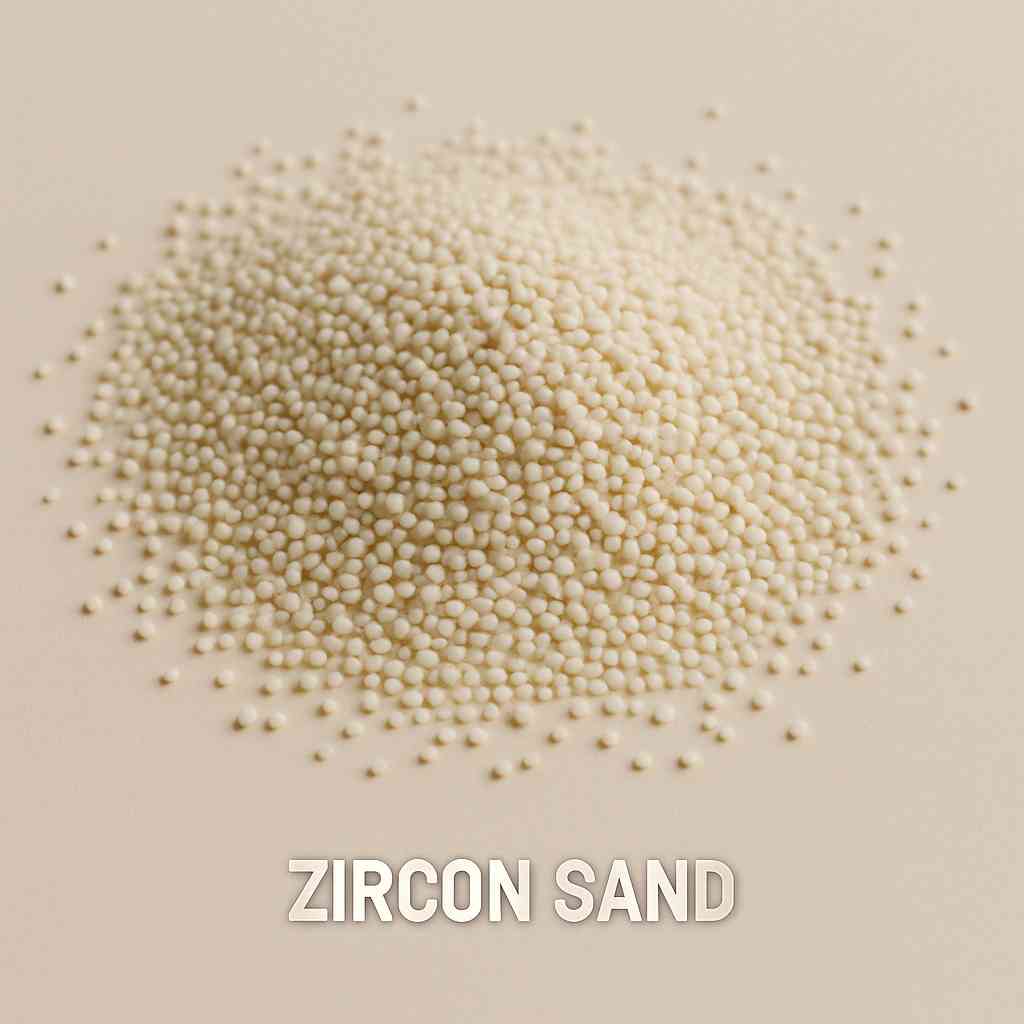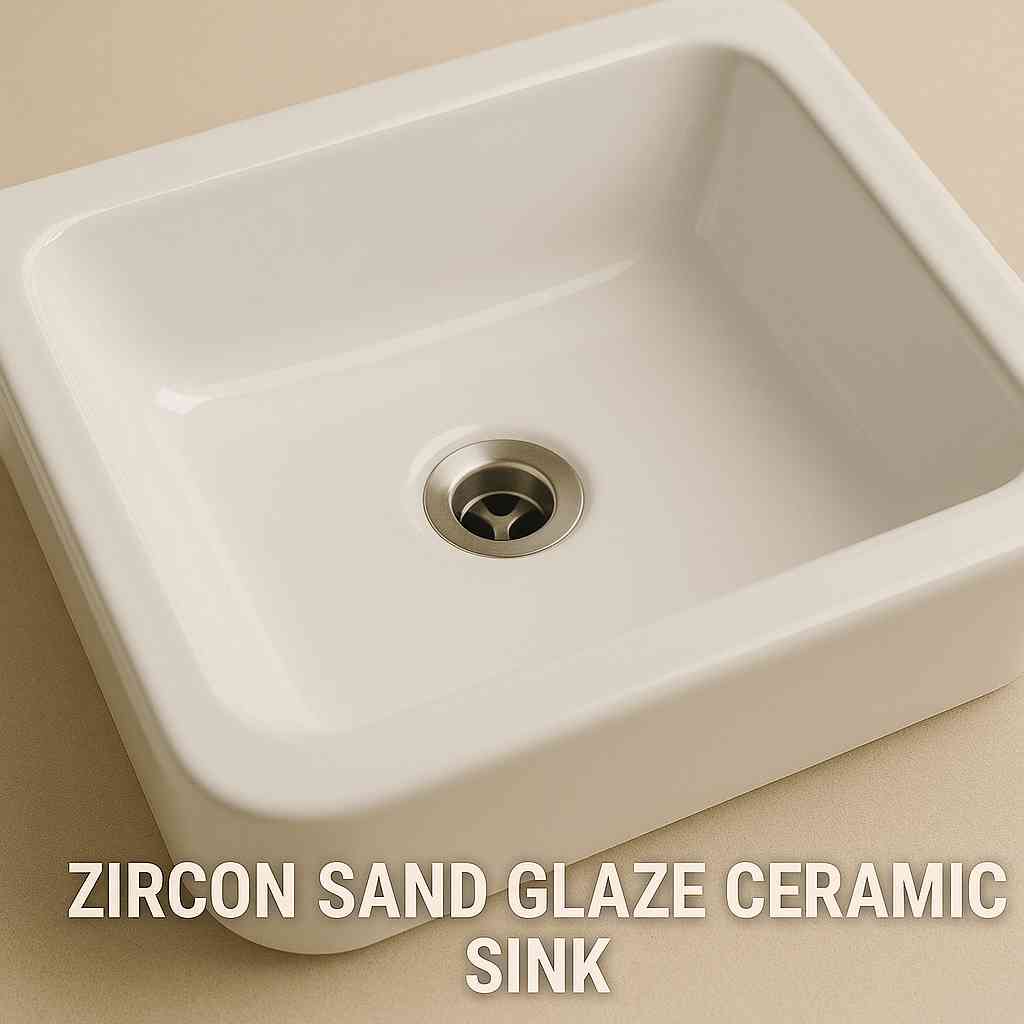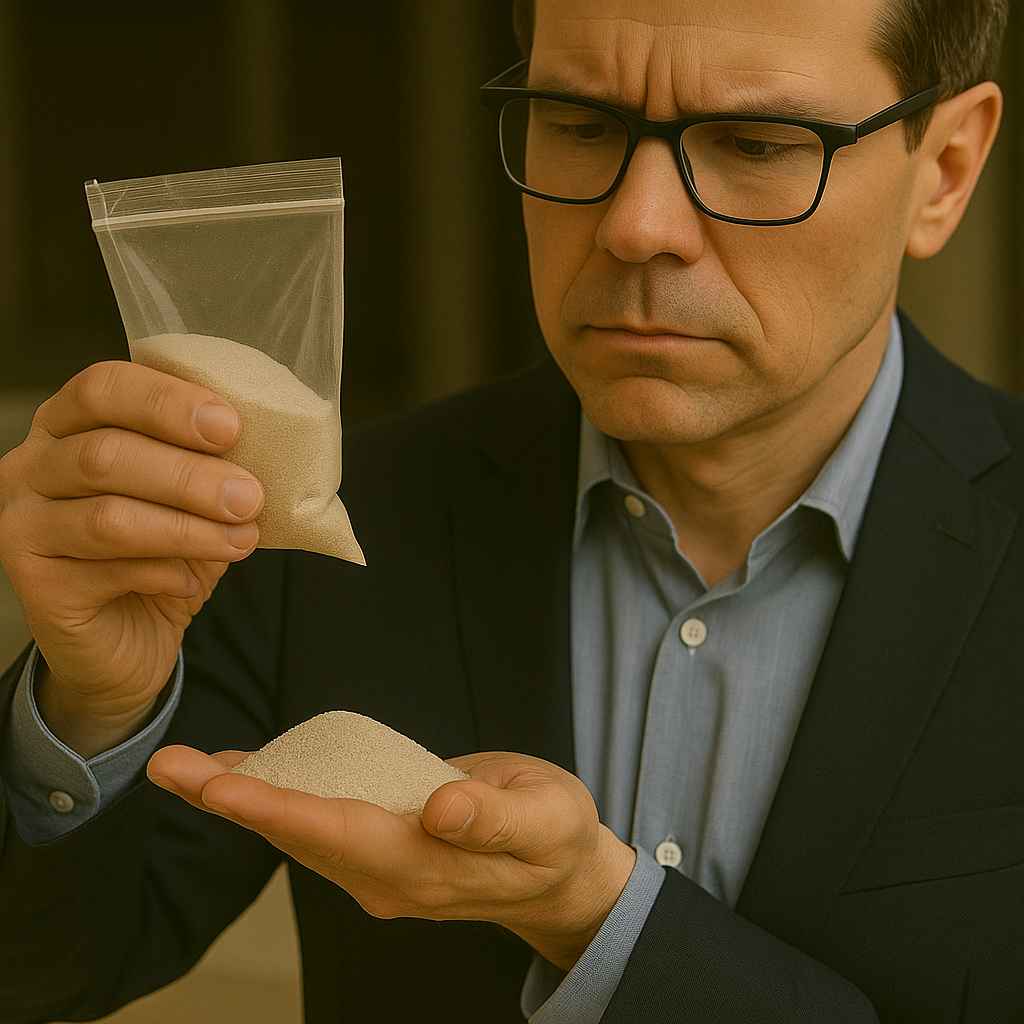Ceramic manufacturers often face one big challenge: achieving flawless sanitary products that stand the test of time and meet customer demands for quality. Many production managers struggle with balancing raw material costs and delivering consistent performance. This mineral can address this concern. It has unique traits that strengthen ceramic bodies and improve appearance. This article explains how it affects sanitary ceramics production, breaks down its key roles, and offers practical insights for buyers and decision-makers in the industry. My background in ceramic raw materials and supply chains will guide you through proven facts and actionable information that help you make sound procurement choices.
What Is Zircon Sand and Its Composition?
Here’s something you should know: this mineral is naturally occurring and mainly composed of zirconium silicate. It comes from heavy mineral sands and often appears as small, rounded grains. The chemical structure includes zirconium, silicon, and oxygen, which create its stable crystal lattice.
Manufacturers value it because it brings hardness and thermal stability to ceramic products. Unlike other sands, this material holds up under high firing temperatures without breaking down. It also has a high melting point near 2,550°C, which makes it an excellent fit for sanitary ceramics that must withstand repeated hot water exposure.
To show how it stands out, let’s compare key properties.
| Property | Zircon Sand | Silica Sand | Alumina |
|---|---|---|---|
| Melting Point (°C) | ~2,550 | ~1,710 | ~2,072 |
| Hardness (Mohs) | 7.5 | 7 | 9 |
| Thermal Expansion | Low | Moderate | Low |
This combination of traits means it stays stable during firing, helping maintain shape and dimensions. Many manufacturers appreciate this predictability since consistent shrinkage and strength mean fewer defects.

This image shows the rounded grains of zircon sand that provide hardness and heat resistance in ceramic production.
How Is Zircon Sand Used in the Sanitary Ceramics Industry?
You might be wondering: how does this raw material actually fit into daily production lines? It gets mixed with clay and other minerals during batch formulation. It usually makes up 5–15% of the total mix, depending on specific zircon sand product requirements.
One common role is acting as an opacifier. It makes the ceramic body less transparent, which gives a bright, clean finish—ideal for toilets, sinks, and bathtubs. Without this additive, the ceramic may appear dull or allow light to pass through thin areas.
This mineral also helps refine glaze quality. It makes glazes more durable and resistant to staining or scratching. For high-traffic bathrooms or public restrooms, this feature can extend product lifespan and reduce maintenance costs.
| Application Area | Purpose |
|---|---|
| Ceramic Body | Improves hardness and strength |
| Glaze | Increases surface durability |
| Engobe Layer | Controls moisture absorption |
In short, it contributes to both hidden structural strength and visible surface quality. The result? Products that meet strict hygiene standards while looking polished for years.
Why Is Zircon Sand Important for Ceramic Strength and Durability?
Let’s break this down: sanitary ceramics must resist everyday wear, chemicals, and rapid temperature changes. This additive reinforces these abilities.
Its hard grains bond well with clay particles, forming a dense structure after firing. This structure fights off cracks and chips better than bodies made only with clay and silica. Think about a washbasin—constant water flow and accidental impacts happen daily. A tougher material can prevent costly breakage.
This sand also lowers thermal expansion in the ceramic body. This means less risk of hairline cracks when hot water contacts a cold basin. Over time, this stability keeps products looking new.
Many tests confirm that adding it can increase bending strength by 10–20% compared to bodies without it. A small investment in this raw material can reduce replacements and customer complaints.
| Strength Factor | Without Zircon Sand | With Zircon Sand |
|---|---|---|
| Bending Strength | 40–45 MPa | 50–55 MPa |
| Thermal Shock Resistance | Low | High |
In summary, this mineral gives products a tougher, longer life. That’s good news for end users and maintenance teams alike.
How Does Zircon Sand Affect the Aesthetic Qualities of Ceramics?
Think about this: appearance plays a big role in sanitary ware sales. Buyers expect a glossy, uniform surface free of blemishes. Zircon sand helps achieve this.
In the glaze, its high refractive index makes light scatter evenly, producing a bright white color. This feature hides minor flaws and gives a premium look. Many luxury bathroom brands count on zircon-based glazes for this exact reason.
Zircon sand also keeps the color stable during repeated cleanings and chemical exposure. Without it, stains and fading can appear over time, which affects product appeal.
For designers, this raw material allows more control over finish variations. Matte, satin, or high gloss—all benefit from zircon sand’s light handling.
| Aesthetic Factor | Impact of Zircon Sand |
|---|---|
| Whiteness | High |
| Stain Resistance | High |
| Surface Smoothness | Excellent |

This image highlights a glossy sanitary ceramic sink with a flawless surface, showing zircon sand’s visual impact.
What Are the Environmental Considerations of Using Zircon Sand?
Here’s the reality: mining impacts nature. Most sources come from coastal or alluvial deposits. Improper mining can harm local ecosystems and water quality.
Many suppliers work under strict regulations to minimize damage. Responsible companies rehabilitate mined land and follow best practices for water use and waste handling.
Recycling is another angle. Some manufacturers reclaim used grains from industrial processes to lower demand for new mining. This step supports circular economy goals and cuts raw material waste.
| Aspect | Responsible Practice |
|---|---|
| Land Impact | Site rehabilitation |
| Water Management | Closed-loop systems |
| Waste | Recycling used zircon |
For buyers, sourcing from reputable suppliers reduces environmental risks. Ask for certifications and audit trails to confirm sustainable practices.
How Does Zircon Sand Influence the Cost of Ceramic Products?
Let’s get straight to it: zircon sand costs more than silica or clay. However, its benefits often offset the higher price.
By increasing durability and visual appeal, zircon sand reduces the chance of product failure or customer dissatisfaction. Fewer returns mean cost savings over time.
In global markets, raw material prices can fluctuate based on mining output and demand. Smart procurement managers monitor trends to time purchases wisely.
| Factor | Impact on Cost |
|---|---|
| Raw Material Price | Higher |
| Product Quality | Higher |
| Long-Term Savings | Yes |
Choosing the right supplier can help control costs. Bulk contracts and strategic sourcing often lower price volatility.

This image shows a purchasing manager reviewing zircon sand quality, ensuring consistent supply for sanitary ceramics.
What Are the Key Challenges in Using Zircon Sand in Ceramics?
Let’s face it: despite benefits, this mineral has drawbacks.
One issue is supply chain risk. Many deposits sit in politically sensitive regions. Trade disruptions or export restrictions can affect steady supply.
Processing also demands precision. Impurities in raw grains can spoil final product quality. So, manufacturers must rely on trusted partners with strict quality control.
| Challenge | Details |
|---|---|
| Supply Risk | Geopolitical factors |
| Processing | Need for purity |
| Price Volatility | Market fluctuations |
Forward-thinking companies diversify suppliers and keep safety stock to reduce these risks.
How Can Manufacturers Optimize Zircon Sand Use in Ceramics?
Pay attention: efficiency matters. Start with proper testing to match zircon sand quality with production needs. Not every batch works equally well.
Use fine grinding and careful mixing to spread particles evenly in the clay body. This step minimizes defects.
Advanced kilns with precise temperature control also help get the most out of zircon sand’s properties. Energy savings and lower waste follow.
| Step | Benefit |
|---|---|
| Testing | Matches sand to product |
| Fine Grinding | Better dispersion |
| Precise Firing | Consistent quality |
Work with technical experts to fine-tune recipes and firing schedules for best results.
What Are the Benefits of Zircon Sand for the Sanitary Ceramics Industry?
Here’s the payoff: using this mineral means stronger products, smoother surfaces, and happier customers.
Buyers see lower maintenance costs because items resist scratches and stains longer. Production lines run smoothly since the material improves firing consistency.
From a brand view, selling durable, shiny ceramic pieces builds trust and loyalty among end users.
| Benefit | Result |
|---|---|
| Strength | Fewer breakages |
| Appearance | Premium finish |
| Customer Satisfaction | Higher repeat business |
All these gains add up to solid business value.
How Can Manufacturers Overcome Challenges in Zircon Sand Production?
Here’s how to stay ahead: invest in better mining and processing methods. Some regions upgrade equipment to cut environmental impact and raise sand purity.
Collaboration with miners and logistics teams keeps supply chains steady. Building long-term supplier relationships can protect against price swings and sudden shortages.
In-house R\&D teams experiment with alternative blends to lower reliance on zircon sand alone. This flexibility shields production from market shocks.
| Solution | Advantage |
|---|---|
| Better Mining | Cleaner supply |
| Supplier Partnerships | Stable contracts |
| R\&D on Blends | Lower supply risk |
Smart planning today secures tomorrow’s output.
Conclusion
This wraps up the main discussion. Let’s close with final thoughts.
Production managers and buyers now see how zircon sand shapes sanitary ceramics. Using it wisely means sturdy, bright products and fewer complaints. Work with Global Industry’s experts to plan your next order confidently. Trust our sourcing strength to keep your production lines running strong.
FAQ Section
Q1: What is zircon sand?
Zircon sand is a naturally occurring mineral composed primarily of zirconium silicate (ZrSiO₄). It is mined from heavy mineral sands and is known for its high melting point and resistance to high temperatures, making it particularly valuable in various industrial applications. One of its primary uses is in the production of ceramics, especially in sanitary ware, where its unique properties contribute to the functionality and longevity of the final products.
Q2: Why is zircon sand used in sanitary ceramics?
Zircon sand is favored in the manufacturing of sanitary ceramics due to its exceptional characteristics. It enhances the physical properties of ceramic bodies by increasing overall strength and thermal stability, which is essential for products subjected to high temperatures and mechanical stress. Additionally, zircon sand contributes to a smooth and glossy finish, improving the aesthetic appeal of the ceramics. This combination of durability and visual quality makes it ideal for applications such as sinks, toilets, and tiles.
Q3: What environmental concerns are associated with zircon sand?
The extraction of zircon sand can raise several environmental concerns, particularly related to the mining process itself. Habitat disruption, soil erosion, and resource depletion are significant issues that can arise, impacting local ecosystems. Furthermore, improper mining practices can lead to water pollution and loss of biodiversity. However, the industry is increasingly focusing on sustainability, implementing more responsible mining practices, restoring mined areas, and exploring recycling options for zircon sand to mitigate these environmental impacts.
Q4: How does zircon sand affect the cost of ceramic products?
The incorporation of zircon sand into ceramic products can lead to increased production costs, influenced by factors such as market price and the specialized processing methods required. Since zircon sand is often more expensive than other raw materials used in ceramics, it raises the overall manufacturing expenses. However, its unique properties often justify the investment, as they enhance the quality, durability, and lifespan of the products, resulting in long-term savings and reduced maintenance costs for consumers and manufacturers alike.
Q5: How can manufacturers optimize their use of zircon sand?
Manufacturers can enhance their utilization of zircon sand through a multifaceted approach. This includes investing in advanced processing techniques that maximize yield and improve product quality while minimizing waste. Additionally, sourcing zircon sand from suppliers committed to sustainable practices can ensure compliance with environmental standards and reduce ecological impact. Innovation in formulation and production methods, such as developing blends with alternative materials or optimizing the mixing process, can also enhance performance, enabling manufacturers to leverage the benefits of zircon sand more effectively in their products.
